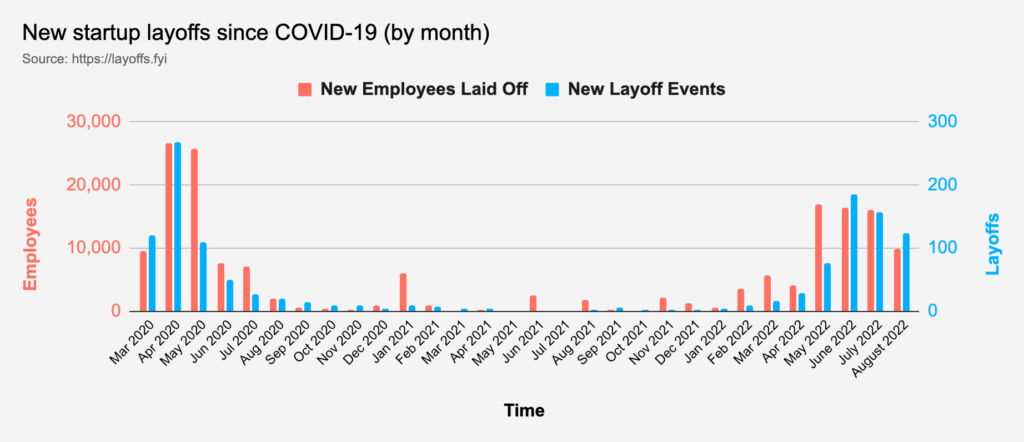A number of tangential events has got me thinking about quitting recently.
Fear not this isn’t the precursor to me having an existential crisis (these are saved for more private moments) – no I mean quitting your job.
Paths to quitting your job
There are many paths that lead to you quitting your job.
The Great Resignation highlighted the agency we have as employees to question whether our jobs meet our diverse individual needs and it seems like the trend of people deciding they don’t is going to continue.
Insights from a recent global survey identified that more than 1 in 5 people are extremely or very likely to find a new employer in 2022.
Despite the uncertainty of investments, we have witnessed an increase in retirements and then you have people (like me) who venture into self-employment of one form or another.
It also appears that you can quit without actually quitting. The term “quiet quitting” went viral in a recent TikTok post referring to people who choose not to leave their job, but to “quit the idea of going above and beyond”.
As a (occasionally cynical!) HR practioner, I’d argue that this isn’t a new phenomenon and with only 21% of people reporting to be engaged at work, the data backs it up.
Being fired
More specifically, I want to explore those situations whereas individuals we have less control over the quitting. Situations where you’ve been fired, got the boot, laid-off, terminated or axed. Whatever the term, it doesn’t make it any more palatable.
Data from Comparably suggests that on average a third of us have been fired.

I am not ashamed to acknowledge that I’m part of these statistics having left a former employer in a somewhat involuntary fashion. To give people hope, it turned out to be one of the best things that ever happened in my career but at the time caused some heartache and soul searching.
As a HR leader, I’ve been on the other side of the proverbial table too many times to mention managing restructures, redundancy programs, dismissals and retirements. As we’ll cover later, while this was never something I relished, I would always step into the situation with empathy and understanding.
Braden Wallake, the 32 year-old CEO of HyperSocial appeared to want to apply the same principle when he had to let go two of his 17 employees. It was disappointing to then see him share his personal anguish in a LinkedIn post that generated more than 10,000 comments, many of which appear to be from Braden justifying his somewhat narcissistic post and crying face.
Closer to home, Bell Media’s recent PR disaster following the exit of long-term news anchor Lisa LaFlamme, is another too common example of poor termination execution (yes that does sound gruesome). It’s also riddled with ageism and sexism resulting in the media company instigating their own review. Come on Bell… Lets Talk!
You don’t have to doomscroll for too long to find your own litany of other awful ways people have been terminated (here’s one source to save you the time) and I’ve shared my perspective on the lack of kindness in previous posts.
Managing restructures isn’t a new thing and as the news and data from layoffs.fyi shows, it continues to be part of business reality. But with so many bad stories being amplified through our social media channels, isn’t it time to think about how we could better?

Fixing the problem
As I consider my own experience (including those situations where things haven’t gone so well) there are three (yes always has to be three) lessons come to mind when it comes to managing employee exits.
Termination should be considered the last resort
I have seen leaders forget there are people at the end of the decisions they are making about restructuring. This might be their way of dealing with guilt but it’s not leadership. If you keep the magnitude of the decision front of mind, you will view terminations as a last resort once all avenues have been explored.
For example, when you are deciding how quickly to scale your business, rather than succumbing to the demands of your investors (or your own greed), consider that a more measured approach could win the day by not negatively impacting so many lives.
Yes, this requires more foresight, but I truly believe most situations are avoidable if you:
- Hire the right person in the first place;
- Ensure your leaders are equipped to provide feedback, coaching and development to keep their team members on track;
- Carry out (proper) strategic workforce planning so you have a good view of the short, medium and longer-term talent horizons based on business needs;
- Proactively look for redeployment opportunities.
Spend 80% of your time planning
Once you’ve explored all possibilities and concluded termination is the next step, don’t jump too quickly to action. You should apply change management principles to prepare for the exits. This includes identifying the impact on different populations to inform a detailed communication plan that ensures the right messages get to the right people in the right order. Questions to consider include:
- Why are these exits happening?
- Who is impacted?
- How were they identified?
- What happens now?
- What does this mean for everyone else?
- Is there more coming?
- How will people be supported – including people who are staying?
Kindness is key
Only once your proverbial ducks are in a row are you ready to share the news with the individuals impacted. You speak to them first. Individually and yes in-person. We’re human beings and will all receive the news differently so don’t try to predict a reaction. Instead keep an open mind, watch for signals and ask questions.
- How do you want this news to be communicated?
- Is there anyone I can call?
- How are you feeling?
- What questions do you have now? Or later?
A few other thoughts:
- Avoid surprises. To steal a phrase from an old leader you need to find a way to “lie some pipe” so people have a sense of what is going to happen.
- As leaders take accountability. Don’t rely on HR or even worse the outplacement consultant!
- Be direct and respectful. Leaders often waffle leaving the individual confused about what is going on and the next steps. Keep to the key messages while being human.
- Don’t make it personal and that includes not getting defensive.
- Remember there is unquantifiable value in people feeling they have been treated with respect. Be fair and generous with your support. In addition to severance terms, include outplacement support and avoid quibbling over small items.
Avoid the goat rodeo
With a dynamic and uncertain economy, it would be naive to think that we can avoid restructures. That doesn’t mean we shouldn’t do better to improve how we deal with these situations with more foresight, planning and kindness so people aren’t left with emotional scars. Let’s avoid creating more goat rodeos!

